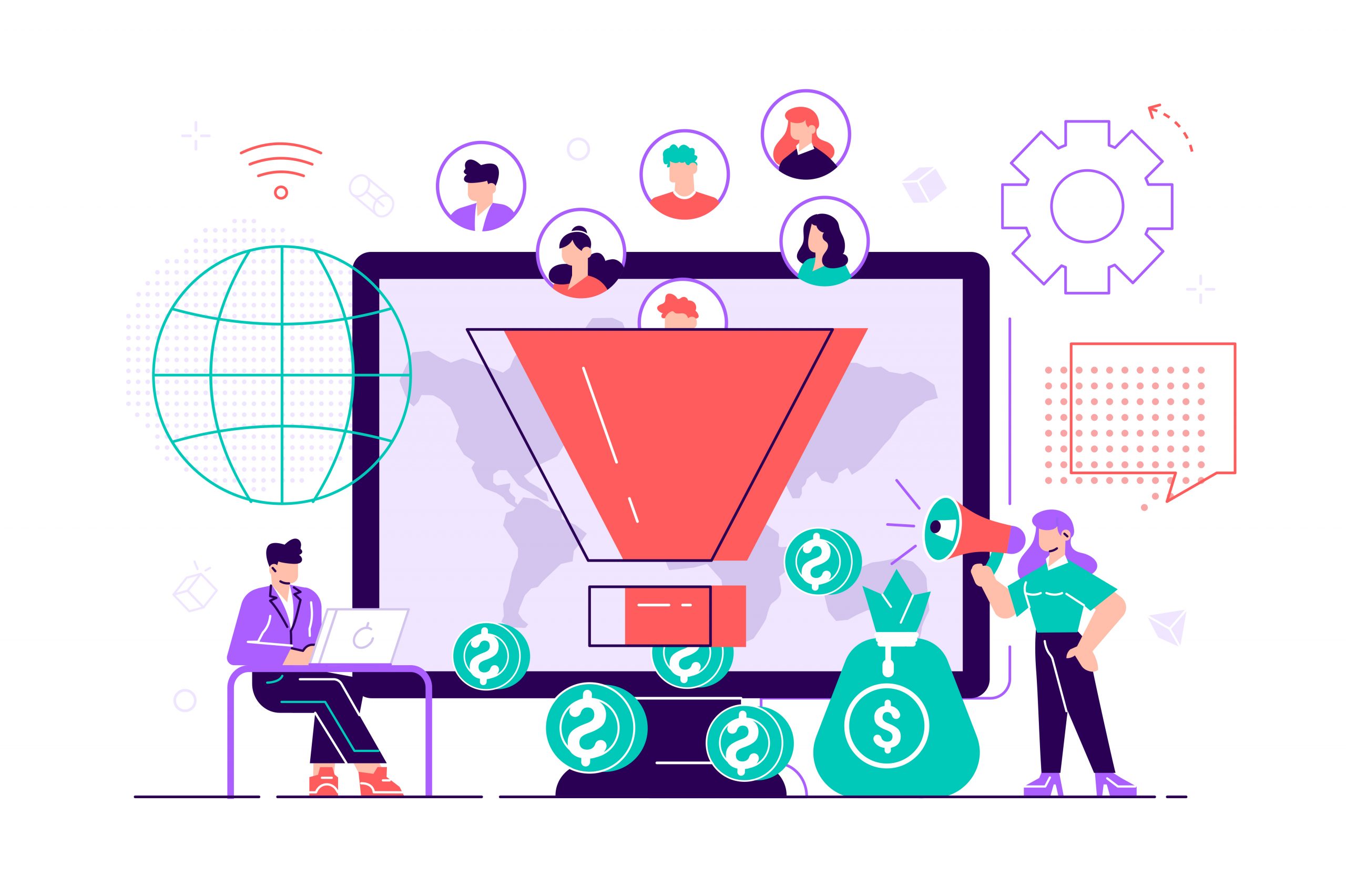Conversion rate is the ultimate metric that measures the success of your B2B website. This means that more of the people visiting your website will connect with you for business. The question then is – how to increase the website conversion rate?
There are two ways of increasing website conversion – organic and paid. Research informs us that B2B companies generate 2x more revenue from organic search as compared to other channels. Moreover, the cost of acquisition per organic lead is lower besides that fact that the quality of organic leads is better than the paid advertising leads.
So, on the whole organic website conversions deliver a better ROI, and at the same time the optimization process sets up a strong foundation on your website for paid campaigns to work more effectively.
In this article, we will solely focus on optimizing website conversion rate through organic methods.
What is Website Conversion?
A website conversion refers to the number of leads generated from the total number of unique website visitors coming in from organic search.
Website Conversion Rate = Total number of leads / Total number of unique visitors * 100
B2B businesses can generate leads through a number of means ranging from a resource download to a business inquiry.
A conversion can mean:
- a business inquiry,
- a resource download,
- a newsletter sign-up,
- a demo request,
- filing up a form,
- chat
- email newsletter subscription
However, the value of these leads varies based on how much time it would take for them to become a paying customer. For instance, a person signing up for your email newsletter doesn’t have the same value as a person asking to talk to your sales team or signing-up for the trial version of your software.
Website conversion rates vary from industry to industry. On an average, B2B website conversion rate is 2.35% where computer product manufacturing and software services see a mere 1.1% conversion while staffing services see around 5% conversion. Similarly, the conversion rate for a pharmaceutical website would be different to a website for legal services.
The conversion rate of your website will also depend on the industry you belong to and the products and services you offer.
How can you Organically Increase Website Conversion Rate?
Optimizing the website conversion organically is a continuous process. It can’t happen overnight.
Yet, it’s not rocket science either. The secret is to first get the ‘relevant audience’ to your website. Then, engage them to get them interested in your products and services. And finally, compel them to make a business inquiry.
This process does take some time but it has proven to be more valuable for businesses worldwide. It generates high-quality leads, creates better business opportunities and delivers a better ROI.
Here are 10 actionable ways in which you can grow your conversions organically.
Know your Customer
For attracting the relevant audience, you need to know who they are. What are their problems? What solutions are they looking for? Observe your current customers and study your competitors to find the answer to these questions.
Create a clear Value Proposition
You know who your audience is and what they want. Now, create a value proposition that clearly states how you can solve their problems better than others. Avoid unnecessary jargon while creating content.
Create Useful and Informative Content
For higher website traffic as well as higher conversions, you need high-quality content on your website. Create customer-centric content including your website copy as well as your blog.
Your content should be genuinely useful and valuable to your audience. Make your website about them and solving their issues. For better engagement, use interactive content like images and videos.
Attract Relevant Traffic with the right keywords
You know who your audience is and what to offer them, now the question is how to get them to your website organically? The answer – Use relevant keywords throughout your website. Use long-tail keywords with 4 or more words as they have 2x more CTR than single word keywords, especially for websites with lower SERP ranks.

Downloadable Resources Increase Conversions
Create useful and informative downloadable resources like whitepapers, how-to guides, case studies, e-books and more. This will help you capture user data and engage with them later.
Use Conversion-focused UX Principles
Write and place the CTA in a way to make it easy for the user to find. The visual appearance of the CTA should compel the user to click on it.
Additionally, keep the choices as simple as possible. Too many CTA’s on a web-page might confuse the user and they will end up abandoning the page.
Add Live Chat to assist the user in case they have any questions. Lastly, ensure that your forms are short and concise. Longer forms usually are a put-off to the user.
A/B testing
A/B testing helps you understand what does and doesn’t work. Test your headlines, website copy, CTA’s, images etc. Change the aspects that aren’t working and test again. Repeat the process until you get the desired results.
Track your Website Metrics
Track how your website is doing by using various analytical tools. You should track both historical data and real time data.
The important metrics that you should be tracking regularly using Google Analytics or similar, are:
- Website traffic and traffic sources
- Bounce rate
- Pages Per session
- Average session duration
- Click Through rate
- Exit rate
- Top exit pages
- Top Entry pages
- Return visitors
- Downloads
- Custom Events
Use heat maps and other such tools to see how your audience interacts with your website in real-time. Analyze data to discover the elements of your website that need more attention. Make improvements, Repeat!
Pay attention to your most converting and least converting pages
Use analytical tools to identify your top converting and least converting pages. Observe each and every element of both the pages. Figure out why a certain page is working and why another isn’t.
Use most of your marketing resources on the top converting pages to get more leads. At the same time, make changes in your least converting pages and keep testing until it converts more.
Add evidence and social proof
In the B2B market also, trust is very important. 89% of customers won’t take an action without reading a review. Add testimonials to your website to prove your credibility. Link your website with third-party review sites to add a social proof. Use UGC like customer videos and images on your website to build trust.
Bottom Line
Website Conversion rate optimization converts more of your website visitors into Leads and finally into paying customers. By addressing the pain points of your target market on your website and following best practices listed above, you can convert mere visitors into a business relationship.
Finally, it is this that delivers a higher ROI on your website. A strong website not only enables organic conversion, but also proves to be effective in converting visitors from paid campaigns on digital and social media.
Improving website conversion organically is a long-term commitment, needs perseverance and an expert team with skills in marketing communications, copy writing, design and SEO. A small or medium sized business may find it beneficial to outsource website optimization to an experienced agency.
